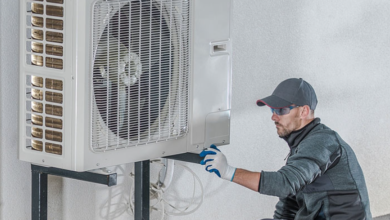Evaluating Retention Ponds and Detention Basins in the Face of Extreme Weather

As climate change accelerates, extreme weather events like heavy downpours, flash floods, and prolonged storms are becoming more frequent and severe. These changing conditions are pushing the limits of existing stormwater infrastructure, particularly in rapidly growing urban areas. Two of the most common systems used to manage stormwater, retention ponds, and detention basins, are now being put to the test. While both are designed to reduce flooding and control runoff, they function in very different ways and respond uniquely to severe weather.
For planners, engineers, and municipalities, understanding how these systems perform under pressure is critical for making informed decisions that protect communities, preserve water quality, and support long-term resilience. As the weather becomes more unpredictable, effective stormwater management systems must be more reliable. Assessing their strengths and weaknesses is vital for climate-resilient infrastructure.
In this blog, we will explore the understanding of retention ponds and detention basins, the impact of stormwater management systems, and their performance in extreme weather conditions.
Understanding Retention Ponds and Detention Basins
Retention ponds and detention basins are common tools for managing stormwater in urban areas. Although they may appear similar, their functions and long-term effects differ significantly.
Retention Ponds
A retention pond is designed to hold a permanent pool of water. It collects and stores stormwater runoff year-round, slowly releasing excess water through a controlled outlet. This allows sediments and pollutants to settle, improving water quality while also reducing downstream flooding.
Detention Basins
A detention basin temporarily stores stormwater during heavy rain and then gradually drains it within a few hours or days. It usually remains dry between storms and is mainly used to reduce peak flow and prevent flash flooding.
Both systems play a crucial role in flood control, but their design and performance vary depending on local weather patterns, land use, and infrastructure goals.
The Impact of Extreme Weather on Stormwater Management Systems
Extreme weather is becoming increasingly common, which puts greater pressure on stormwater systems, such as retention ponds and detention basins. These systems were designed for storms of the past, but today’s rainfall patterns are more intense, unpredictable, and frequent, making it essential to reassess how they manage stormwater systems.
- Climate Change Is Altering Rainfall Patterns
As the climate changes, rain falls more intensely and frequently. Storms that were once uncommon now occur more regularly, placing significant pressure on stormwater systems that were not designed for such extreme conditions. What was once a manageable flow of water is now turning into overwhelming surges that flood streets, homes, and infrastructure. To help address these challenges, innovative stormwater solutions from Hydroworks are being integrated to enhance system performance and adapt infrastructure to today’s evolving climate conditions.
- Urbanization Increases Runoff Volume
As cities grow, more buildings, roads, and parking lots cover the ground. These hard surfaces do not absorb water as the soil does, so when it rains, water runs off quickly instead of soaking in. That extra runoff needs somewhere to go, and if systems like retention ponds or detention basins are not correctly designed, flooding becomes a real risk.
- Flash Floods Create Urgency
Flash floods are sudden and dangerous. In just minutes, heavy rain can rapidly rise to high water levels. Stormwater systems must act fast and efficiently to handle these events. If not, even short storms can cause severe damage.
See also: Who Is Paul Heyman’S Wife? Insights Into His Personal Life
How Retention Ponds Perform During Extreme Weather
- Continuous Storage Capacity
Retention ponds are designed to maintain a constant pool of water, ensuring they are always prepared to collect more when it rains. During extreme weather, this built-in water level helps absorb sudden surges of stormwater. The design allows for extra space above the normal water level, so even during heavy downpours, the pond can handle a large amount of runoff without immediately overflowing.
These ponds are particularly helpful during storms that occur frequently or last for an extended period. They can let water out slowly, which stops problems from happening further down.
- Water Quality Improvement
As water sits in a retention pond, dirt, oils, and pollutants from roads and rooftops begin to settle at the bottom. This slow movement allows the pond time to clean the water before it’s released naturally.
When heavy rain brings much runoff filled with debris, the pond acts like a filter. Over time, this process helps improve the quality of water that eventually flows into rivers, lakes, or other drainage systems.
- Flood Mitigation
By collecting and holding water for more extended periods, retention ponds lower the risk of fast, dangerous flooding downstream. Instead of allowing rainwater to rush into storm drains all at once, the pond takes in the water, holds it, and releases it gradually.
This slower release prevents sudden spikes in water levels that often lead to floods in streets, homes, and businesses. Retention ponds are helpful when multiple storms occur close together.
- Dependent on Outlet Efficiency
The effectiveness of a retention pond heavily depends on the condition of its outlet structure. If the outlet is blocked by debris or not functioning correctly, water cannot leave the pond at the intended rate. During extreme weather conditions, this becomes even more crucial. A clogged or undersized outlet can cause the pond to overflow, leading to localized flooding.
Regular inspection and cleaning of these outlets are necessary to make sure the system continues to work correctly when intense storms arrive. A well-maintained outlet ensures the pond can manage both everyday rainfall and more severe weather events.
How Detention Basins Perform During Extreme Weather
- Quick Runoff Capture
Detention basins are built to stay dry most of the time and only hold water when it rains. During extreme weather, especially when storms are sudden and intense, these basins quickly collect stormwater runoff that flows off roads, rooftops, and other hard surfaces.
Because they start empty, they can absorb large amounts of water in a short time, helping to reduce the pressure on nearby storm drains and pipes. This fast collection is essential for preventing water from pooling in streets or flooding low-lying areas.
- Reduces Peak Flow
When it rains heavily, water usually rushes into the drainage system all at once, which can overwhelm the system. Detention basins slow down this process by temporarily holding the water and then releasing it slowly through an outlet structure.
This controlled release reduces the peak flow, which is the highest amount of water moving through a system at one time. Lower peak flows mean fewer chances of flooding in downstream areas and less stress on the drainage infrastructure.
- Low Water Quality Treatment
Since water in detention basins doesn’t stay long, there isn’t much time for sediments or pollutants to settle. That means the water leaving the basin may still carry oils, trash, and other contaminants. These basins focus more on controlling floodwater rather than cleaning it.
While they help manage water volume effectively during storms, they provide limited benefits in terms of improving water quality unless combined with other systems, such as filters or vegetation, around the basin.
- Drains Within 24-72 Hours
After the storm passes, the detention basin slowly drains all the water it has collected, typically within one to three days. This quick draining keeps the basin ready for the next storm. If rain returns soon after, the space allows it to handle another round of runoff without overflowing.
Fast drainage also means the area can be repurposed for other uses, such as open green space or recreational fields, without remaining flooded for long, making it practical in busy urban areas with limited space.
In Conclusion
In today’s world, extreme weather is unpredictable. It is more important than ever to understand how stormwater systems, such as retention ponds and detention basins, function. Each plays a unique role; retention ponds provide long-term storage and water quality benefits, while detention basins quickly capture and release runoff to reduce flooding risks. As rainfall becomes heavier and more sudden, communities need to rely on solutions that are not only effective but also adaptable to changing conditions. Choosing the right system, maintaining it regularly, and designing with future storms in mind can make all the difference in protecting homes, infrastructure, and natural waterways.





